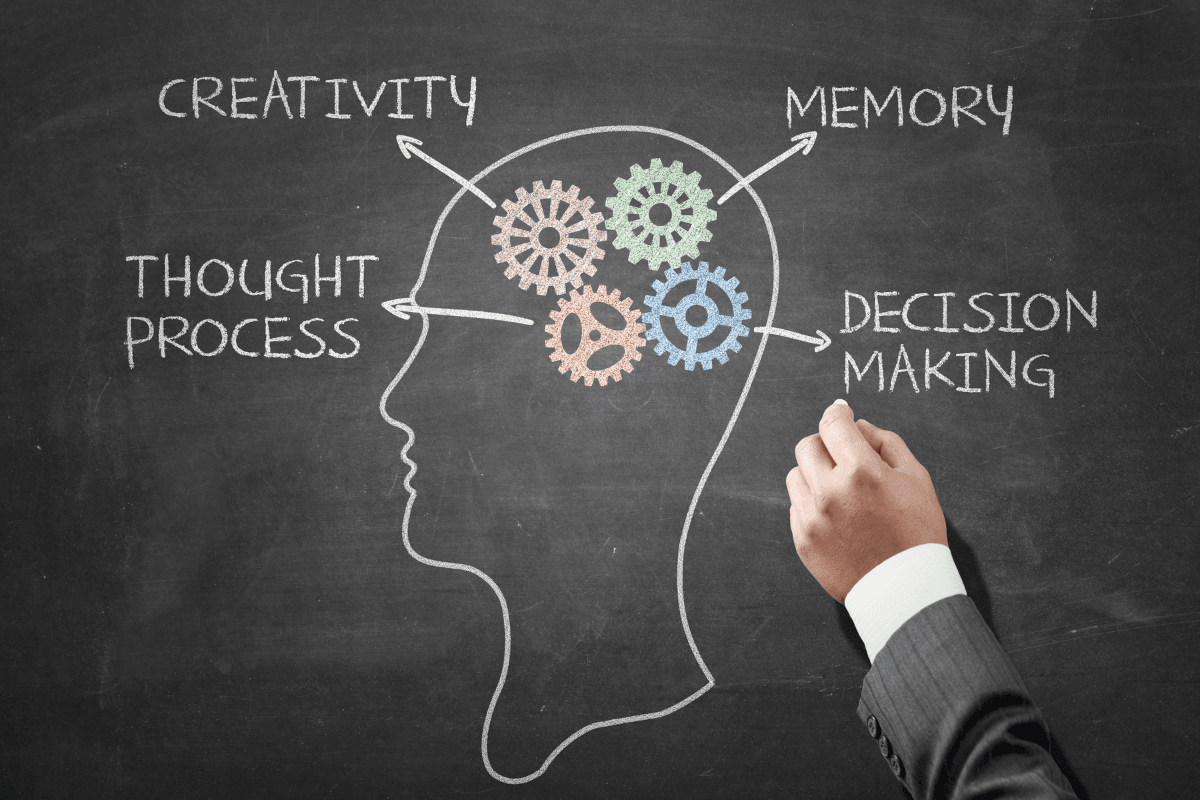Are you struggling to reach your full potential at work? This article will guide you through effective peak performance strategies to maximize your workplace success. We’ll explore key elements of peak performance, practical techniques for implementation, and the role of leadership in driving results. By the end, you’ll have actionable steps to boost your productivity, enhance your skills, and achieve your career goals. Learn how to unlock your full potential and excel in your professional life.
Peak Performance Strategies: Secrets to Success and Productivity
Understanding Peak Performance Strategies for Maximizing Workplace Potential

Peak performance strategies focus on optimizing individual and team productivity in the workplace. These approaches aim to enhance employee motivation and align personal goals with organizational culture. By implementing effective strategies, companies can create an environment that fosters growth and success.
One key aspect of peak performance is understanding and managing risk. Organizations that encourage calculated risk-taking often see increased innovation and creativity among their employees. This approach can lead to breakthroughs and new insights that drive business growth.
Effective communication plays a crucial role in maximizing workplace potential. Platforms like LinkedIn provide opportunities for professionals to connect, share knowledge, and gain valuable insights from industry leaders. Leveraging these networks can enhance individual and team performance:
- Build professional relationships
- Stay updated on industry trends
- Share expertise and best practices
- Seek mentorship opportunities
Implementing peak performance strategies requires a holistic approach that considers both individual and organizational factors. By focusing on employee motivation, risk management, and effective communication, companies can create a culture of excellence that drives success and unlocks the full potential of their workforce.
Key Elements of Effective Peak Performance Strategies

Effective peak performance strategies encompass clear objective-setting, progress measurement, open communication, and professional development. These elements help individuals experiment with new approaches, pursue their dreams, and build confidence.
By fostering a culture of continuous improvement and work-life balance, organizations can maximize potential and drive success. Platforms like Facebook can facilitate team collaboration and knowledge sharing for enhanced development.
Define Your Objectives Clearly
Defining clear objectives is essential for peak performance, much like setting a goal for a marathon. Professionals who establish specific, measurable targets for their work can develop the mental toughness needed to overcome challenges and achieve success. By outlining precise goals, individuals can focus their efforts and track progress effectively.
Clear objectives also help professionals identify areas for improvement in their health, skills, and education. When goals are well-defined, it becomes easier to recognize gaps in knowledge or abilities that may hinder performance. This awareness allows individuals to invest in targeted personal development, enhancing their overall capabilities and increasing their chances of success in the workplace.
Establish Metrics to Measure Progress
Establishing metrics to measure progress is crucial for peak performance. Buttimer Consulting emphasizes the importance of tracking key performance indicators (KPIs) to gauge productivity and motivation. By setting quantifiable benchmarks, professionals can objectively assess their advancement and identify areas for improvement.
Effective metrics provide valuable information for training and development. They help individuals and organizations pinpoint specific areas where additional support or resources may be needed. This data-driven approach enables targeted interventions, leading to enhanced performance and increased job satisfaction:
| Metric Type | Example | Purpose |
|---|---|---|
| Productivity | Tasks completed per week | Measure output efficiency |
| Quality | Error rate reduction | Assess work accuracy |
| Learning | Training hours completed | Track skill development |
Foster Open Communication Among Team Members
Open communication within teams fosters an environment where ideas flow freely, much like an athlete‘s mindset in sports psychology. By encouraging team members to share thoughts and concerns openly, organizations can reduce turnover and improve customer satisfaction. This approach allows for the exchange of diverse perspectives, leading to innovative solutions and improved performance.
Effective communication also acts as a form of art, balancing the need for transparency with respect for individual boundaries. Teams that master this art create a supportive atmosphere where members feel valued and heard, resulting in increased motivation and productivity. By prioritizing open dialogue, organizations can cultivate a culture of trust and collaboration, essential for achieving peak performance in the workplace.
Encourage Continuous Professional Development
Continuous professional development plays a crucial role in achieving peak performance at work. Organizations that encourage ongoing learning and skill enhancement through remote work opportunities and goal setting practices tend to see improved productivity and employee satisfaction. By investing in their workforce’s growth, companies can foster a culture of accountability and innovation.
Physical fitness also contributes significantly to professional development and peak performance. Incorporating wellness programs and project management techniques can help employees maintain a healthy work-life balance while improving their overall effectiveness. This holistic approach to development ensures that individuals are well-equipped to handle challenges and excel in their roles.
Promote Work-Life Balance for Enhanced Focus
Promoting work-life balance enhances focus and drives innovation in the workplace. Organizations that prioritize this balance often see increased productivity and employee satisfaction. By implementing automation tools and flexible schedules, companies can help employees manage their time effectively, allowing them to maintain discipline in both their professional and personal lives.
Developing healthy habits and routines contributes to improved work-life balance and peak performance. Employees who establish clear boundaries between work and personal time tend to be more focused and creative during working hours. This balance allows for better stress management and can lead to increased innovation as employees bring fresh perspectives to their roles:
| Work-Life Balance Strategy | Benefit | Impact on Performance |
|---|---|---|
| Flexible work hours | Improved time management | Increased productivity |
| Wellness programs | Better physical and mental health | Enhanced focus and creativity |
| Regular breaks | Reduced stress and burnout | Sustained high performance |
Practical Techniques to Implement Peak Performance Strategies

Implementing peak performance strategies requires practical techniques that boost efficiency and teamwork. Organizations can utilize time management tools, harness collaborative technologies, and establish feedback loops to drive improvement.
Cultivating a positive culture and integrating mindfulness practices help reduce stress and fear while promoting exercise enhances overall well-being. These approaches enable professionals to overcome language barriers and maximize their potential in the workplace.
Utilize Time Management Tools to Boost Efficiency
Effective time management tools boost workplace efficiency and foster creativity. Organizations that implement structured scheduling systems often see increased productivity and value creation. These tools help employees prioritize tasks, reducing the risk of failure and allowing them to focus on high-impact activities.
Time management techniques also promote a culture of accountability and humility. By tracking time spent on various projects, professionals gain insights into their work habits and areas for improvement. This self-awareness can lead to better resource allocation and more efficient use of company credit cards for business expenses:
| Time Management Tool | Benefit | Impact on Performance |
|---|---|---|
| Digital calendars | Improved scheduling | Increased productivity |
| Task prioritization apps | Better focus on key activities | Enhanced value creation |
| Time tracking software | Accurate project costing | Improved resource allocation |
Harness Collaborative Technologies to Enhance Teamwork
Collaborative technologies play a crucial role in enhancing teamwork and reducing frustration in the workplace. By leveraging tools like video conferencing and project management platforms, teams can communicate more effectively, even when working remotely. This technology-driven approach to collaboration fosters leadership skills and improves overall team performance.
Organizations can draw inspiration from the discipline of martial arts and the precision of tennis to implement collaborative technologies strategically. Just as athletes in these sports rely on consistent practice and clear communication, teams can use digital tools to streamline workflows and share information seamlessly. This tech-enabled teamwork helps overcome challenges and drives peak performance across the organization.
Establish a Feedback Loop for Performance Improvement
Establishing a feedback loop for performance improvement is crucial in developing mental toughness and fostering a competitive edge in the workplace. By implementing regular check-ins and performance reviews, organizations can create an environment where employees feel supported and motivated to excel. This approach allows experts to provide valuable insights and guidance, much like coaches in track and field events.
Incorporating feedback mechanisms such as podcasts or team meetings can enhance communication and promote continuous learning. These platforms offer opportunities for sharing experiences, discussing challenges, and celebrating successes. By fostering an open dialogue, organizations can identify areas for improvement and develop targeted strategies to boost overall performance:
| Feedback Method | Frequency | Benefits |
|---|---|---|
| One-on-one meetings | Weekly | Personalized guidance |
| Team performance reviews | Monthly | Collaborative goal-setting |
| Anonymous surveys | Quarterly | Honest feedback collection |
Cultivate a Positive Organizational Culture
Cultivating a positive organizational culture is crucial for peak performance, much like the camaraderie found in mountain sports teams. Organizations that prioritize employee well-being and foster a supportive environment often see improved customer experiences and marketing outcomes. By creating a culture that values collaboration and innovation, companies can inspire their teams to reach new heights in their performance.
Implementing strategies to promote a positive culture can include team-building activities centered around food and shared experiences. These initiatives help build stronger connections among colleagues and create a sense of belonging. A positive culture also contributes to better customer experiences, as engaged employees are more likely to provide exceptional service:
- Organize team retreats in mountain settings
- Host collaborative cooking events for team bonding
- Implement recognition programs for outstanding customer service
- Encourage cross-departmental projects to foster innovation
Integrate Mindfulness Practices to Reduce Stress
Integrating mindfulness practices into the workplace can significantly reduce stress and improve overall performance. Organizations in the United States that incorporate mindfulness techniques often see enhanced customer relationship management and sales outcomes. By encouraging employees to take brief mindfulness breaks throughout the day, companies can foster a more focused and productive mindset.
Mindfulness practices can be easily implemented through guided meditation sessions or mindfulness apps accessible via email. These tools help employees develop a growth mindset, enabling them to approach challenges with greater clarity and resilience. By reducing stress levels, mindfulness practices contribute to more effective communication and improved customer interactions, ultimately driving better business results.
The Role of Leadership in Peak Performance Strategies

Leadership plays a crucial role in driving peak performance strategies within teams. By inspiring vision, supporting employee engagement, facilitating resources, encouraging innovation, and building trust, leaders create an environment where employees can thrive.
Effective leadership strategies focus on boosting team endurance, managing energy levels, and implementing tactics that unlock the full potential of employees, ultimately leading to improved organizational performance.
Inspiring Team Vision and Purpose
Leadership plays a crucial role in inspiring team vision and purpose, which directly impacts peak performance. Effective leaders use executive coaching techniques to help employees stay focused at work and align their behavior with organizational goals. By clearly communicating the team’s vision and providing regular feedback, leaders can create a sense of purpose that drives motivation and productivity.
Implementing software tools can enhance a leader’s ability to inspire and guide their team. These tools can facilitate goal tracking, performance monitoring, and communication, ensuring that everyone stays on the same page. Leaders who leverage technology to support their vision-setting efforts often see improved team cohesion and performance:
- Set clear, measurable goals
- Provide regular progress updates
- Use collaboration software for seamless communication
- Conduct periodic vision alignment sessions
Supporting Employee Engagement and Recognition
Supporting employee engagement and recognition plays a crucial role in achieving peak performance. Leaders who focus on understanding and managing employee emotions create an environment where team members feel valued and motivated. By fostering a culture of collaboration and knowledge sharing, organizations can align individual goals with company objectives, resulting in increased productivity and job satisfaction.
Effective recognition programs go beyond traditional rewards, tapping into employees‘ intrinsic motivations. Leaders can implement peer-to-peer recognition systems, public acknowledgments of achievements, and personalized development opportunities to boost engagement. These strategies help create a positive feedback loop, where employees feel appreciated and inspired to contribute their best efforts:
| Recognition Strategy | Impact on Engagement | Employee Benefit |
|---|---|---|
| Peer-to-peer recognition | Fosters teamwork | Improved collaboration skills |
| Public acknowledgments | Boosts morale | Increased visibility |
| Personalized development | Enhances job satisfaction | Career growth opportunities |
Facilitating Resources for Success
Effective leaders facilitate resources for success by ensuring their teams have the necessary tools and support to manage stress and achieve peak performance. There is an emphasis on the importance of providing access to brain-based strategies that help employees optimize their cognitive functions and reduce workplace stress. By investing in these resources, organizations create an environment where individuals can thrive and reach their full potential.
The role of love and compassion in leadership cannot be understated, and the advocacy for resources that promote emotional well-being and positive relationships within teams. Leaders who prioritize these aspects often see improved collaboration and creativity among their employees. By facilitating access to mindfulness programs, stress management workshops, and team-building activities, leaders can foster a culture of support and growth:
| Resource Type | Purpose | Impact on Performance |
|---|---|---|
| Brain-based training | Enhance cognitive function | Improved decision-making |
| Stress management workshops | Reduce workplace stress | Increased productivity |
| Team-building activities | Foster positive relationships | Enhanced collaboration |
Encouraging Innovation and Creativity
Leadership development plays a crucial role in encouraging innovation and creativity within organizations. Leaders who foster a culture of experimentation and open-mindedness create an environment where employees feel comfortable sharing new ideas. By providing access to data and resources, leaders empower their teams to explore innovative solutions and push the boundaries of conventional thinking.
Effective leaders understand the importance of nurturing the mind and building a supportive community to drive creativity. They encourage employees to read books, attend workshops, and engage in collaborative brainstorming sessions. By promoting continuous learning and knowledge sharing, leaders cultivate a workforce that is better equipped to generate innovative ideas and tackle complex challenges in the workplace.
Building Trust and Accountability
Building trust and accountability is essential for leaders to foster peak performance within their teams. Effective leaders create an environment where employees feel safe to take risks and learn from their mistakes. By consistently demonstrating integrity and following through on commitments, leaders set the foundation for a culture of trust and mutual respect.
Accountability plays a crucial role in driving peak performance and continuous learning. Leaders who establish clear expectations and hold team members responsible for their actions encourage a sense of ownership and pride in work. This approach cultivates a growth mindset, where employees actively seek opportunities for improvement and embrace challenges as learning experiences:
- Set clear performance expectations
- Provide regular feedback and coaching
- Celebrate successes and learn from failures
- Encourage open communication and transparency
- Lead by example in accountability and continuous improvement
Measuring the Impact of Peak Performance Strategies on Workplace Success

Measuring the impact of peak performance strategies involves analyzing metrics, gathering employee feedback, and reviewing team dynamics. Organizations can track progress by celebrating achievements and motivating staff. Regular assessment allows for strategy adjustments based on performance insights, ensuring continuous improvement and maximizing workplace success.
Analyzing Performance Metrics and Outcomes
Analyzing performance metrics and outcomes is crucial for evaluating the effectiveness of peak performance strategies in the workplace. Organizations can track key indicators such as productivity rates, employee engagement scores, and customer satisfaction levels to gauge the impact of their initiatives. By comparing these metrics before and after implementing performance strategies, companies can identify areas of improvement and success.
Regular analysis of performance data allows organizations to make data-driven decisions and refine their strategies. Companies can use tools like dashboards and analytics software to visualize trends and patterns in employee performance. This approach enables leaders to identify high-performing individuals and teams, as well as areas where additional support or training may be needed to enhance overall workplace success.
Collecting Employee Feedback for Continuous Improvement
Collecting employee feedback is essential for measuring the impact of peak performance strategies and driving continuous improvement. Organizations can use surveys, focus groups, and one-on-one interviews to gather insights on how employees perceive and experience the implemented strategies. This feedback provides valuable information on what’s working well and areas that need refinement.
Regular feedback collection allows companies to adapt their peak performance strategies to evolving workplace needs. By actively seeking employee input, organizations demonstrate their commitment to creating a supportive and high-performing work environment. This approach not only helps in fine-tuning strategies but also boosts employee engagement and ownership in the improvement process.
Reviewing Team Dynamics and Effectiveness
Reviewing team dynamics and effectiveness is crucial for assessing the impact of peak performance strategies. Organizations can observe how teams collaborate, communicate, and solve problems to gauge the success of implemented strategies. By analyzing team interactions and outcomes, leaders can identify areas where performance has improved and where further development may be needed.
Effective review processes often involve both quantitative and qualitative assessments. Teams can track metrics such as project completion rates, error reduction, and client satisfaction scores. Additionally, leaders can conduct team assessments and 360-degree feedback sessions to gain insights into interpersonal dynamics and collective performance:
| Assessment Method | Metrics Evaluated | Impact on Team Effectiveness |
|---|---|---|
| Project completion rates | Efficiency and productivity | Improved time management |
| Error reduction | Quality of work | Enhanced accuracy and reliability |
| 360-degree feedback | Interpersonal skills | Strengthened team cohesion |
Celebrating Achievements to Motivate Staff
Celebrating achievements plays a crucial role in motivating staff and reinforcing peak performance strategies. Organizations that recognize and reward employee accomplishments create a positive work environment where individuals feel valued and appreciated. This approach not only boosts morale but also encourages continued high performance and dedication to organizational goals.
Effective celebration strategies can include public recognition, performance-based bonuses, or team outings. By acknowledging both individual and team successes, companies foster a culture of excellence and collaboration. Regular celebrations help maintain momentum and enthusiasm, driving employees to consistently strive for peak performance in their roles.
Adjusting Strategies Based on Performance Insights
Adjusting strategies based on performance insights is crucial for maintaining peak performance in the workplace. Organizations that regularly analyze data and feedback can identify areas for improvement and make targeted adjustments to their strategies. This iterative approach ensures that performance initiatives remain effective and aligned with evolving business needs.
Effective strategy adjustment often involves collaboration between leadership and employees. By involving team members in the process, organizations can gain valuable insights from those directly impacted by performance strategies. This collaborative approach not only improves the effectiveness of adjustments but also increases employee buy-in and commitment to ongoing performance improvement efforts.
Case Studies of Successful Peak Performance Strategies in Action

Case studies of successful peak performance strategies demonstrate how organizations and individuals have achieved remarkable results. These examples highlight transformative changes, showcase personal growth, and reveal lessons from industry leaders. By examining strategies tailored to different work environments, organizations can glean key takeaways to enhance their own performance initiatives and unlock their full potential.
Highlighting Transformative Organizational Changes
A leading technology company implemented a comprehensive peak performance strategy that transformed its organizational culture. By focusing on employee well-being and fostering a growth mindset, the company saw a significant increase in productivity and innovation. The strategy included regular mindfulness sessions, personalized development plans, and collaborative goal-setting workshops.
Another case study highlights a healthcare organization that revolutionized its approach to patient care through peak performance initiatives. The organization introduced a performance tracking system that allowed teams to monitor and improve their efficiency in real-time. This data-driven approach, combined with targeted training programs, resulted in reduced wait times and improved patient satisfaction scores:
| Organization | Strategy Implemented | Results |
|---|---|---|
| Tech Company | Mindfulness sessions, personalized development | Increased productivity and innovation |
| Healthcare Organization | Real-time performance tracking, targeted training | Reduced wait times, improved patient satisfaction |
Showcasing Individual Success Stories and Growth
A mid-level manager at a marketing firm implemented peak performance strategies to overcome workplace challenges and achieve remarkable growth. By adopting mindfulness practices and setting clear, measurable goals, she improved her focus and productivity. Her success caught the attention of senior leadership, leading to a promotion and increased responsibilities within the organization.
Another individual success story involves a software developer who struggled with work-life balance and burnout. After participating in a peak performance workshop, he learned techniques for managing stress and prioritizing tasks effectively. By applying these strategies, he not only improved his coding efficiency but also found time to pursue personal interests, resulting in greater job satisfaction and career advancement opportunities.
Lessons Learned From Industry Leaders
Industry leaders have demonstrated that consistent implementation of peak performance strategies yields significant results. Companies like Google and Apple have shown that fostering a culture of innovation and continuous learning can lead to sustained success. These organizations prioritize employee well-being, encourage risk-taking, and provide resources for personal and professional development.
Another key lesson from industry leaders is the importance of adaptability in peak performance strategies. Successful companies regularly reassess their approaches, adjusting to changing market conditions and employee needs. This flexibility allows organizations to maintain high performance levels even in challenging environments, ensuring long-term success and employee satisfaction.
Strategies Tailored to Different Work Environments
Remote work environments have seen success with tailored peak performance strategies that focus on digital collaboration and self-management.
Companies implementing virtual team-building activities, flexible schedules, and goal-tracking software have reported increased productivity and employee satisfaction. These strategies address the unique challenges of remote work, such as isolation and time management, while leveraging the benefits of a distributed workforce.
In high-pressure industries like finance and healthcare, organizations have found success with strategies that emphasize stress management and rapid decision-making skills. Some firms have introduced mindfulness training and cognitive resilience programs to help employees maintain peak performance under pressure. These tailored approaches have led to improved client outcomes and reduced burnout rates among professionals:
| Work Environment | Tailored Strategy | Observed Outcome |
|---|---|---|
| Remote | Virtual team-building, flexible schedules | Increased productivity, higher satisfaction |
| High-pressure industries | Mindfulness training, cognitive resilience programs | Improved client outcomes, reduced burnout |
Key Takeaways for Other Organizations
Organizations can learn from successful case studies that implementing a holistic approach to peak performance yields the best results. Companies that focus on employee well-being, continuous learning, and clear goal-setting tend to see significant improvements in productivity and innovation. Adapting strategies to suit specific work environments and regularly reassessing their effectiveness are key to maintaining high performance levels.
Another crucial takeaway is the importance of leadership in driving peak performance initiatives. Organizations that invest in leadership development and encourage open communication between management and employees often experience smoother implementation of performance strategies. By fostering a culture of trust and accountability, companies can create an environment where peak performance becomes the norm:
| Key Takeaway | Implementation Strategy | Expected Outcome |
|---|---|---|
| Holistic approach | Focus on well-being, learning, and goal-setting | Improved productivity and innovation |
| Leadership development | Invest in management training, encourage open communication | Smoother implementation of strategies |
| Regular reassessment | Conduct periodic reviews, adapt strategies as needed | Sustained high performance levels |
Future Trends in Peak Performance Strategies for the Workplace

Future workplace trends focus on leveraging technology, flexible arrangements, and employee well-being to enhance performance. Organizations are embracing diversity, anticipating changes in workplace dynamics, and adapting strategies to meet evolving expectations. These trends aim to create environments where individuals can thrive, innovate, and reach their full potential in an ever-changing work landscape.
Embracing Technology for Enhanced Performance
Future workplace trends are embracing technology to enhance peak performance strategies. Organizations are adopting artificial intelligence and machine learning tools to analyze employee productivity patterns and provide personalized recommendations for improvement. These technologies help identify areas where individuals can optimize their work processes and achieve better results.
Virtual and augmented reality technologies are also gaining traction in workplace performance enhancement. Companies are using these tools to create immersive training experiences and simulate challenging work scenarios, allowing employees to practice and refine their skills in a safe environment. This approach leads to improved confidence and performance when facing real-world situations:
| Technology | Application | Performance Impact |
|---|---|---|
| AI and Machine Learning | Productivity analysis and recommendations | Optimized work processes |
| Virtual Reality | Immersive training simulations | Enhanced skill development |
| Augmented Reality | Real-time guidance and information overlay | Improved decision-making |
Shifting Towards Flexible Work Arrangements
The shift towards flexible work arrangements is becoming a key component of peak performance strategies in modern workplaces. Organizations are recognizing that allowing employees to choose their work hours and locations can lead to increased productivity and job satisfaction. This flexibility enables individuals to align their work schedules with their peak energy levels and personal commitments, resulting in more focused and efficient work output.
Flexible work arrangements also contribute to better work-life balance, which is essential for maintaining peak performance over the long term. Companies that offer options such as remote work, compressed workweeks, or job sharing are seeing improvements in employee retention and overall well-being. These arrangements allow professionals to manage their stress levels more effectively and dedicate time to personal growth activities that ultimately enhance their workplace performance.
Prioritizing Employee Well-Being and Mental Health
Future peak performance strategies are increasingly prioritizing employee well-being and mental health as essential components of workplace success. Organizations are recognizing that a healthy, balanced workforce is more productive and innovative. Many companies are implementing comprehensive wellness programs that include mental health support, stress management workshops, and access to counseling services.
The focus on mental health is extending beyond traditional benefits to include on-site meditation rooms, flexible work hours for therapy appointments, and training for managers to recognize and address mental health concerns. By creating a supportive environment that values mental well-being, organizations are seeing improvements in employee engagement, retention, and overall performance. This holistic approach to peak performance is becoming a standard practice in forward-thinking workplaces.
Incorporating Diversity and Inclusion in Performance Strategies
Future peak performance strategies are increasingly incorporating diversity and inclusion as key components for unlocking the full potential in the workplace. Organizations are recognizing that diverse teams bring a wealth of perspectives, experiences, and ideas, leading to more innovative solutions and better decision-making. By fostering an inclusive environment where all employees feel valued and heard, companies are seeing improvements in overall performance and employee engagement.
Effective diversity and inclusion strategies go beyond recruitment to focus on creating equitable opportunities for growth and advancement. Companies are implementing mentorship programs, leadership development initiatives, and unconscious bias training to ensure all employees have the support they need to reach their full potential. These efforts are resulting in more diverse leadership teams and a stronger pipeline of talent throughout organizations:
- Implement diverse hiring practices
- Offer unconscious bias training for all employees
- Create employee resource groups for underrepresented communities
- Establish mentorship programs to support career advancement
- Regularly assess and adjust policies to promote equity and inclusion
Anticipating Changes in Workplace Dynamics and Expectations
Future workplace dynamics are shifting towards a more fluid and adaptable environment, requiring organizations to anticipate and prepare for these changes. Companies are embracing agile methodologies and cross-functional teams to respond quickly to market demands and technological advancements. This approach allows for greater flexibility and innovation, enabling employees to develop diverse skill sets and contribute to various aspects of the business.
Expectations around career progression and personal development are evolving, with employees seeking more frequent feedback and opportunities for growth. Organizations are moving away from annual performance reviews in favor of continuous feedback systems and personalized development plans. This shift allows for more targeted skill development and helps employees align their career goals with the company’s objectives, ultimately leading to improved performance and job satisfaction.
Frequently Asked Questions
How can peak performance strategies improve workplace productivity?
Peak performance strategies enhance workplace productivity by optimizing mental and physical well-being, fostering goal-setting, and promoting time management. These techniques help employees maintain focus, reduce stress, and increase efficiency, leading to improved overall performance and job satisfaction.
What are the key elements of effective peak performance strategies?
Effective peak performance strategies encompass goal-setting, mental preparation, physical conditioning, stress management, and continuous learning. These elements work together to optimize focus, resilience, and skill development, enabling individuals to consistently achieve high levels of performance in their chosen fields.
How can leaders implement peak performance strategies in their teams?
Leaders can implement peak performance strategies by setting clear goals, fostering open communication, providing regular feedback, and creating a supportive environment. Encouraging continuous learning, recognizing achievements, and promoting work-life balance are also crucial for maximizing team productivity and engagement.
How do you measure the impact of peak performance strategies?
Peak performance strategies can be measured through quantifiable metrics such as productivity increases, goal achievement rates, and performance evaluations. Qualitative assessments, including self-reported well-being and stress levels, also provide valuable insights into the effectiveness of these strategies on individuals and teams.
What future trends are emerging in workplace peak performance strategies?
Emerging workplace peak performance trends include mindfulness practices, flexible work arrangements, personalized wellness programs, and AI-assisted productivity tools. Companies are focusing on holistic employee well-being, emphasizing mental health support, continuous learning opportunities, and data-driven performance optimization to enhance overall workforce effectiveness and satisfaction.
Conclusion
Unlocking your full potential at work isn’t just about effort—it’s about strategy, mindset, and guidance. With the right support, you can rise above challenges and create meaningful success in both your personal and professional life. Buttimer Consulting offers transformative speaking, coaching, and counseling services tailored to help individuals and teams perform at their best. Call (404) 949-9500 today to start your journey or visit our website to learn more about how we can help you or your organization thrive.









